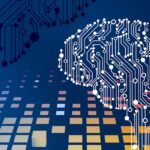Critical thinking is a cognitive process that involves the ability to analyze information, evaluate evidence, and synthesize ideas to form reasoned judgments. It is a skill that transcends mere memorization or rote learning, requiring individuals to engage deeply with content, question assumptions, and consider multiple perspectives. The essence of critical thinking lies in its systematic approach to problem-solving and decision-making, which is increasingly vital in a world inundated with information.
As we navigate complex issues, from social justice to climate change, the ability to think critically allows individuals to discern fact from fiction, enabling informed participation in societal discourse. The development of critical thinking skills is not confined to academic settings; it permeates various aspects of life, influencing personal relationships, professional environments, and civic engagement. In an era where misinformation can spread rapidly through social media and other digital platforms, the capacity to critically assess sources and arguments is more crucial than ever.
This skill set empowers individuals to challenge prevailing narratives, engage in constructive debates, and contribute meaningfully to discussions that shape our communities and societies.
The Importance of Critical Thinking in the Digital Age
In the digital age, the sheer volume of information available at our fingertips presents both opportunities and challenges. The internet has democratized access to knowledge, allowing individuals to explore diverse viewpoints and engage with a wealth of resources. However, this abundance can also lead to confusion and misinformation.
Critical thinking serves as a vital tool for navigating this landscape, enabling individuals to sift through the noise and identify credible sources. The ability to evaluate the reliability of information is essential for making informed decisions, whether in personal matters or broader societal issues. Moreover, critical thinking fosters a culture of inquiry and skepticism that is necessary for innovation and progress.
In a world where technology evolves at an unprecedented pace, the capacity to question existing paradigms and explore new ideas is paramount. Organizations that prioritize critical thinking are better equipped to adapt to change, solve complex problems, and drive creativity. As we face global challenges such as pandemics and climate change, the need for critical thinkers who can analyze data, assess risks, and propose viable solutions becomes increasingly apparent.
What are AI Dialogue Tools?
AI dialogue tools are sophisticated software applications designed to facilitate human-computer interaction through natural language processing (NLP) and machine learning algorithms.
They range from simple chatbots that answer frequently asked questions to advanced systems capable of holding complex discussions on various topics.
The underlying technology enables these tools to understand context, recognize intent, and generate relevant responses, making them valuable resources for enhancing communication and learning. The applications of AI dialogue tools are vast and varied. In educational settings, they can serve as virtual tutors, providing personalized feedback and support to students as they navigate challenging subjects.
In professional environments, they can assist with customer service inquiries or facilitate team collaboration by streamlining communication processes. As these tools continue to evolve, their potential for enhancing critical thinking skills becomes increasingly significant, offering users opportunities to engage in reflective dialogue and explore complex ideas.
How AI Dialogue Tools Can Enhance Critical Thinking Skills
AI dialogue tools can play a pivotal role in enhancing critical thinking skills by providing users with opportunities for interactive learning experiences. Through engaging conversations with these tools, individuals can practice articulating their thoughts, questioning assumptions, and exploring alternative viewpoints. For instance, a student studying history might use an AI dialogue tool to discuss the causes of a particular event.
The tool could prompt the student with questions that encourage deeper analysis, such as “What were the underlying social factors?” or “How did different groups perceive this event?” This type of interaction fosters a habit of inquiry that is central to critical thinking. Furthermore, AI dialogue tools can simulate real-world scenarios that require critical analysis and decision-making. For example, a business student might engage with an AI tool designed to present case studies involving ethical dilemmas.
By navigating these scenarios and discussing potential outcomes with the AI, students can develop their ability to weigh evidence, consider consequences, and articulate their reasoning. This experiential learning approach not only enhances critical thinking but also prepares individuals for the complexities they will encounter in their professional lives.
Using AI Dialogue Tools to Encourage Analytical Thinking
Analytical thinking involves breaking down complex information into manageable parts for better understanding and evaluation. AI dialogue tools can effectively promote this skill by guiding users through structured analytical processes. For instance, when presented with a multifaceted problem—such as evaluating the impact of a new policy—an AI tool can help users identify key components of the issue, such as stakeholders involved, potential benefits and drawbacks, and relevant data sources.
By facilitating this breakdown of information, the tool encourages users to engage in systematic analysis rather than relying on surface-level observations. Moreover, AI dialogue tools can provide immediate feedback on users’ analytical processes. When a user articulates their reasoning or presents an argument, the tool can respond with counterarguments or additional questions that challenge the user’s perspective.
This dynamic interaction not only sharpens analytical skills but also cultivates resilience in thought processes. Users learn to defend their positions while remaining open to alternative viewpoints—a hallmark of effective analytical thinking.
Fostering Problem-Solving Abilities with AI Dialogue Tools
Problem-solving is a critical component of both personal and professional success. AI dialogue tools can enhance problem-solving abilities by presenting users with real-world challenges that require creative solutions. For example, an engineering student might interact with an AI tool that poses design challenges related to sustainability.
The tool could guide the student through brainstorming sessions, encouraging them to consider various approaches while weighing feasibility and impact. Additionally, AI dialogue tools can help users develop a systematic approach to problem-solving by introducing frameworks such as the scientific method or design thinking principles. By engaging in conversations that emphasize these methodologies, users learn how to define problems clearly, generate hypotheses, test solutions, and iterate based on feedback.
This structured approach not only improves problem-solving skills but also instills confidence in users’ abilities to tackle complex issues.
Developing Decision-Making Skills through AI Dialogue Tools
Effective decision-making requires a blend of critical thinking, analytical skills, and emotional intelligence. AI dialogue tools can support this development by simulating decision-making scenarios that require users to weigh options carefully. For instance, a healthcare professional might use an AI tool designed to present patient case studies with varying symptoms and histories.
The tool could prompt the user to consider differential diagnoses based on available evidence while also factoring in ethical considerations related to patient care. Moreover, AI dialogue tools can assist users in recognizing cognitive biases that may influence their decision-making processes. By prompting users to reflect on their thought patterns—such as confirmation bias or overconfidence—these tools encourage more objective evaluations of situations.
This self-awareness is crucial for making sound decisions in both personal and professional contexts.
Enhancing Communication and Collaboration with AI Dialogue Tools
Effective communication is foundational for collaboration in any setting—be it educational institutions or workplaces.
For example, students working on group projects might use an AI tool to simulate discussions where they must present their ideas persuasively while addressing counterarguments from peers.
In collaborative environments, AI dialogue tools can facilitate teamwork by streamlining communication processes. They can serve as mediators in discussions by summarizing key points or suggesting areas for further exploration based on group input. This functionality not only enhances group dynamics but also fosters an environment where diverse perspectives are valued and integrated into decision-making processes.
Overcoming Biases and Assumptions with AI Dialogue Tools
Cognitive biases and assumptions often cloud judgment and hinder critical thinking. AI dialogue tools can help users identify and overcome these biases by prompting reflective questioning techniques. For instance, when discussing a controversial topic such as immigration policy, an AI tool might ask users to consider how their personal experiences shape their views or challenge them to explore opposing arguments thoroughly.
By engaging in this reflective practice with an AI dialogue tool, users become more aware of their biases and learn strategies for mitigating their influence on decision-making processes. This heightened awareness fosters a culture of open-mindedness and intellectual humility—qualities essential for effective critical thinking.
Implementing AI Dialogue Tools in Educational Settings
The integration of AI dialogue tools into educational settings offers significant potential for enhancing critical thinking skills among students. Educators can leverage these tools as supplemental resources that provide personalized learning experiences tailored to individual needs. For instance, teachers might incorporate AI dialogue tools into their curricula as virtual tutors that assist students with homework or facilitate discussions around complex topics.
Moreover, training educators on how to effectively implement these tools is crucial for maximizing their impact on student learning outcomes. Professional development programs can equip teachers with strategies for integrating AI dialogue tools into lesson plans while fostering an environment conducive to critical inquiry. By embracing technology as a partner in education rather than a replacement for traditional teaching methods, educators can create dynamic learning experiences that cultivate critical thinking skills.
The Future of Critical Thinking Skills and AI Dialogue Tools
As technology continues to evolve at an unprecedented pace, the future of critical thinking skills will likely be intertwined with advancements in AI dialogue tools. These tools have the potential not only to enhance individual learning experiences but also to reshape how we approach education and professional development more broadly. As society grapples with increasingly complex challenges—ranging from ethical dilemmas in technology deployment to global health crises—the demand for individuals equipped with strong critical thinking skills will only grow.
Looking ahead, it is essential for educators, policymakers, and technologists to collaborate in developing frameworks that ensure equitable access to AI dialogue tools across diverse populations. By prioritizing inclusivity in technology deployment and fostering environments where critical thinking thrives, we can prepare future generations for success in an ever-changing world marked by complexity and uncertainty. The synergy between critical thinking skills and AI dialogue tools holds immense promise for empowering individuals to navigate the intricacies of modern life with confidence and clarity.









